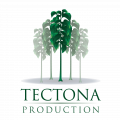Other Environmental Monitoring Indicators
VI. Impact of the use of pesticides
Since the beginning of our operations, the use of pesticides in our projects has been avoided as much as possible. However, using FSC-approved pesticides has been an exceptional, but sometimes necessary, practice, for example, after harvesting to control regrowth.
The alternative practices to avoid the use of pesticides and to control the attack of pests that are always present in teak plantations, for example, Atta spp., are managed favoring the development of a diverse and leafy undergrowth that provides food for insects and reduces their need to attack our main crop.
VII. The impact of natural disasters
The evaluation of the effects of natural disasters on our projects covers aspects that could influence the health, and expected growth of the projects, infrastructure, and communities.
Panama over time has been a zone of low incidence of cyclones and hurricanes being privileged for its location and geographical orientation.
We present an assessment of the common risks, accompanied by our planned mitigation strategies to minimize the impacts in the event of:
Storms
Based on the use of geographic and topographic information systems, the areas of interest for the location of our management units were defined.
However, the occurrence of these punctual events due to global warming is managed by establishing windbreak barriers, regular shoring activities to ensure adequate apical development of trees, pruning that does not exceed 50% of the tree’s height, etc.
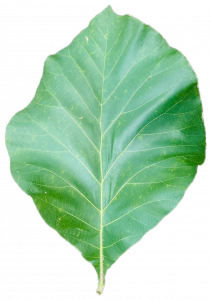
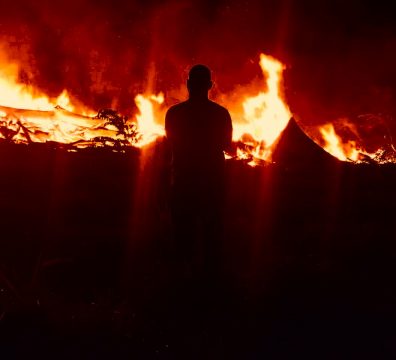
Forest fires
The combination of high temperatures, adverse climatic factors, and the existence of flammable material, such as necro mass in our case, or the possibility of actions by pyromaniacs, increases the risk of forest fires. For this reason, we have chosen to establish firebreaks, maintain clean surrounding areas around the plantation, and train staff in safe practices.
The implementation of these measures has made it possible that on the two occasions that fires have occurred in one of our projects, they have been controlled, quickly and with a minimum impact on the plantations, on the surrounding communities, and with practically no economic impact.
Floods
Darien faces the possibility of floods due to heavy rains and phenomena such as La Niña.
According to the INHPA, in Darién the meteorological stations closest to our projects were Quebrada Félix, with an average monthly precipitation of 168 mm between 1974 and 1979, and Metetí, which in 1980 had an average monthly precipitation of 136.6 mm and an average temperature annual 27°C.
However, the probability of flooding in our projects is minimal, thanks to the methodology applied for the selection of the lands.
Nonetheless, we have implemented efficient drainage systems, we avoid the plantation in areas prone to floods and we have trained our collaborators in response protocols for these types of events.
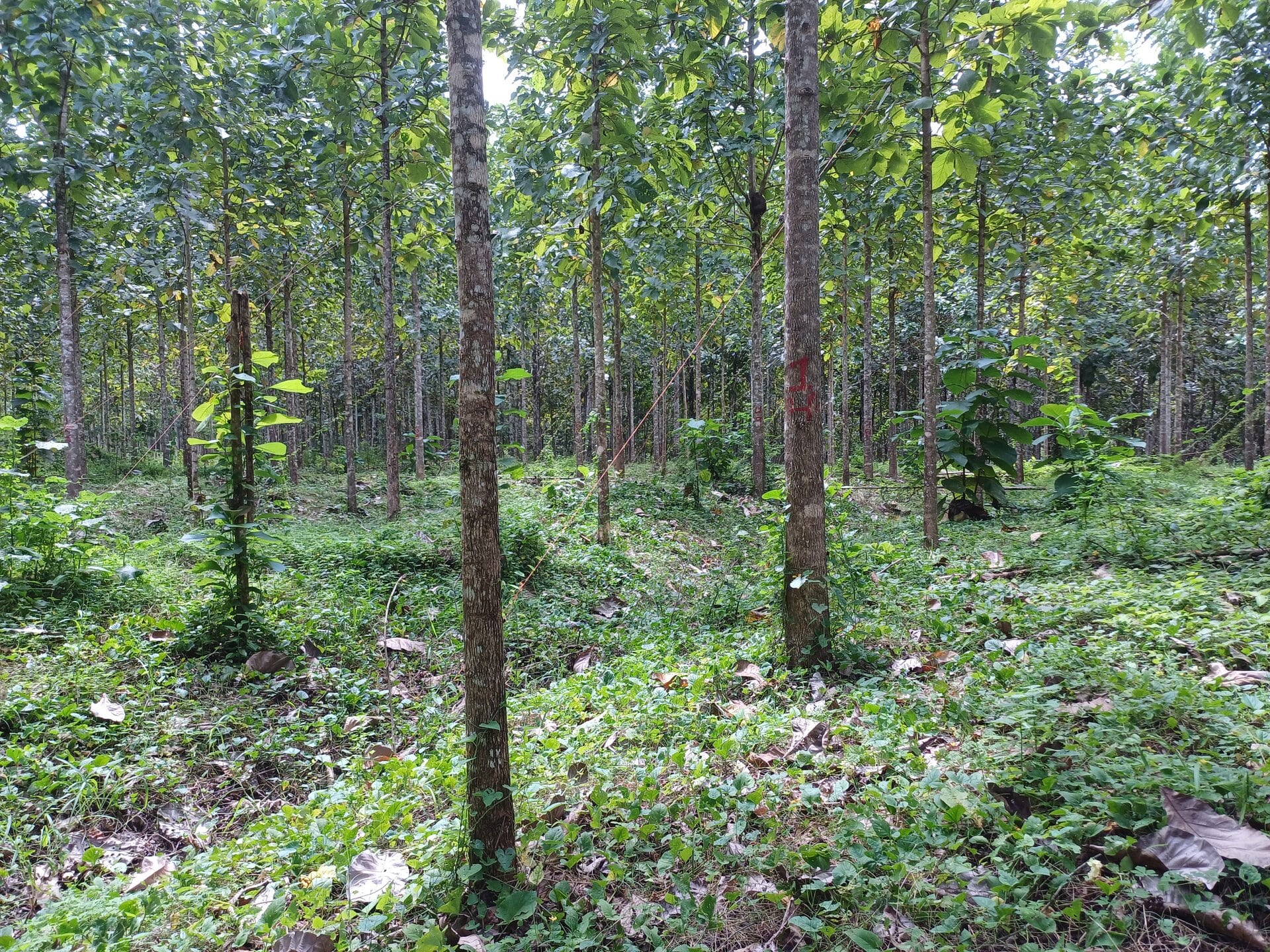
Landslides
Seismic events, heavy rainfalls, and the unauthorized entry of large herds seeking for food in our farms can trigger landslides.
For this reason, we carry out continuous monitoring and evaluate the soil stability in our projects. We implement soil conservation measures, avoid commercial reforestation in areas at high risk of landslides, and choose to plant native vegetative species to strengthen the soil’s stability.
Droughts
Events such as the El Niño Phenomenon that cause water shortages can negatively impact the development of our plantation.
For this reason, from the beginning of our project we carefully choose the origin of the genetic material for our plantation, prioritizing the genetics that demonstrate resistance to drought, and we maintain a constant monitoring of the local climate conditions.

Thunderstorms
The incidence of direct rays in the trees can cause damage to the bark, branches and even the death of the affected individuals. Additionally, there is an existent risk of lighting causing forest fires in areas with dry vegetative material.
Strong winds associated with storms could also cause the rupture or detachment of branches, causing a negative impact in the structure and health of the trees, as well as posing a safety risk to the people.
The constant monitoring of each of the management units is in order to report incidents of falling or dying trees that could affect the people or private property surrounding our projects.
VIII. Impacts of infrastructure development, transportation activities, and forestry activities
The planning, conservation, and utilization of the infrastructure, along with transport operations and forestry activities are managed in a way that safeguards the environmental values present in our projects. As a result, they have been managed and protected:
- Hydric resource: in our farms where the projects are developed, there are permanent and imminent surface water courses that could be affected by our activities. For this reason, we have established protected forests surrounding these water courses, and we make sure to avoid carrying out forestry activities in these areas.
- Soil: to avoid considerable impacts in the soil at the time of thinning or harvesting, the forestry equipment used only operates during the dry season. In the case of the harvesting machinery, the right tires have been used to allow greater buoyancy.
- Infrastructure: facing vehicular access problems on the roads, the use is avoided, and maintenance is performed during the dry season to level and clean ditches. Sewage systems are implemented permanently to avoid impacts from runoff, as in the Guayacán project, La Esperanza, and drainage works are carried out as in Relojera. There is a semi-annual infrastructure evaluation protocol in each project for monitoring these measures.
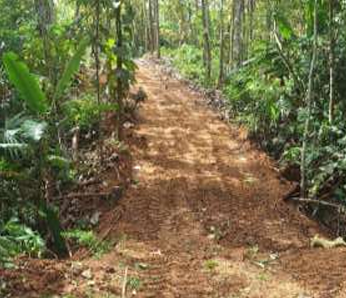
According to the PNTC, the “Land Use, Land Use Change and Forestry” sector in Panama shows a low impact on CO2 emissions. Forest lands contribute -154.6% to the country’s CO2 emissions between 1994 and 2017, meaning that this sector absorbs more CO2 than it emits, thus reducing atmospheric CO2.
Tectona Production, Inc., counts with two scenarios for the harvesting and loading activities, we will proceed to break down their corresponding impacts according to each case.
Scenario I. Potential impacts in the infrastructure caused by the traditional harvesting, use and loading activities.
Cutting and delimbing
During tree felling, appropriate methods are used, specialized tools and trained logging staff. Although cautions are taken, factors such as wind, the topography of the land, the branches’ structure, and errors in the cuts can increase the risk of accidents to the staff due to deviations in the planned direction of felling, which at the same time could result in damages to the surrounding infrastructure such as camps, wineries, property fences, roads, ditches, and sewers. However, over the years we have prevented these incidents through careful forest management practices.
If the chainsaws do not receive proper maintenance over the years when using fossil fuels, could contribute to air contamination and possible oil spills. For this reason, we have always procured to perform timely maintenance to our chainsaws with authorized workshops and with our trained staff.
Logging
The logging operation could have a significant impact if it’s not planned or executed correctly. The main effects are observed in the soil, where the compaction caused by agricultural tractors and its impact on the drag strip are the main concerns. Also, there is the risk of damaging or hitting the remaining trees. Finally, the use of machinery with fossil fuels contributes to air contamination. Therefore, implementing appropriate management practices and preventive maintenance to mitigate these impacts, are practiced activities routinely in our projects.
Loading and unloading
The mechanized loading and unloading operation in forestry activities can have significant impacts on the soil and air quality. Concerning the soil, the machinery movement could result in compaction, which is why the constant use of a single site for these activities is prioritized, reducing the formation of gaps, footprints, and accumulation of water.
To prevent possible oil leaks that could damage the soil, we carry out continuous monitoring of the machinery, and of the contractors we verify the preventive maintenance to avoid spills. Also, given that the use of machinery implies and increase in air contamination, due to gas emissions, particles during its functioning, and spilling of liquids; we keep a previous communication with the contractors, verifying that their vehicles are in perfect functioning condition before operating in our projects.
During the loading and unloading operations, our technical team is present to supervise the process and prevent possible contaminations, sinking, or other environmental affectations. In case of presentation of spills or affectations, our technical team takes immediate actions of contention and amendments, following best practice protocol.
Transport
During transport, the truck circulation can increase the compaction of roads, even if they have been designed to bear this load. Is crucial for us to avoid the misuse of the roads, and prevent possible oil leaks, that could affect the soil, through appropriate preventive maintenance and the application of management procedures in case of spills.
The use of machinery that functions with fossil fuels will always have a negative impact in air quality. Is fundamental to consider measures to mitigate these effects and reduce atmospheric contamination during the transport operations.
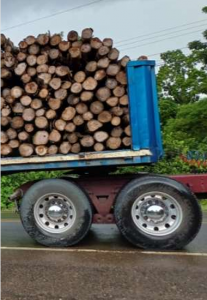
Scenario II. Potential impacts in the infrastructure caused by the forestry harvesting activities and mechanized load.
For forestry harvesting, the John Deere processor 1170 G and the loader 1510 G are used, with adaptations specifically for teak and tropical conditions. Previous to forest harvesting the roads had been widened and upon completion of the forestry harvesting grass seeds were spread to create a vegetal cover and to avoid erosion, runoff, or soil loss.
Delimbing and chopping
For this, the processor is used which considers the species, the dimensions of the trees, and the objectives of the felling, as well as the existent structures and the possible environmental risks.
Loading in field and transport to log yard
It is done with the loader 1510 G, to recollect and load the logs directly, which reduces the damages caused by the logging of timber during the thinning or the final harvest.
However, the equipment’s weight and the load entail the risk of damaging the infrastructure or the remaining trees in the plantations because of this, the road network is widened to allow the access of forestry equipment, and appropriate tires are used to guarantee traction and buoyancy of the trills and roads of access, minimizing the risks of sinking and permanent damages.
The transport of logs can provoke landslides in the gutters and fractures in the sewers, which increases the risk of damage to the road infrastructure and the intensity of the impact in the bearing layer because of this we carry out these activities during the dry season.
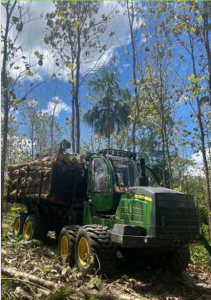
Loading and unloading
Forestry equipment with close cabin and security characteristics is used, which allows carrying out these activities safely and efficiently, reducing the risk of injuries for the operator and other workers. The timber is stored in a yard or along the path as far as the trucks go.
However, the frequent movement of the machinery in the same space can cause impacts on our roads, gutters, and yard area. This includes damages to the surface due to loading and unloading maneuvers, as well as soil compaction and the formation of gaps or grooves due to the movement of the machinery or the trucks. For this reason, we establish clear roads of access and permanent storage areas; at the same time, we carry out regular inspections and maintenance in all of the areas and repair any damage or deterioration.
IX. Waste Management
The recollection, cleaning, transport, and disposal of all of the wastes are done in an environmentally responsible way, fulfilling the FSC standards. We classify the solid wastes produced in the camps into categories such as metals, organic residues, glass, plastic, and cardboard, and we take care of its recollection and delivery to the local authority in charge of the management of these non-dangerous wastes. Also, we reuse the packaging of chemicals washing them carefully as indicated in our manual “Manual of Procedures for the safe and appropriate use of chemical substances – ERA” and we convert them into flowerpots. The maintenance of machinery and vehicles’ derivate liquids are managed by the correspondent mechanical teams, while the tires are delivered to the tire specialists for their appropriate treatment.
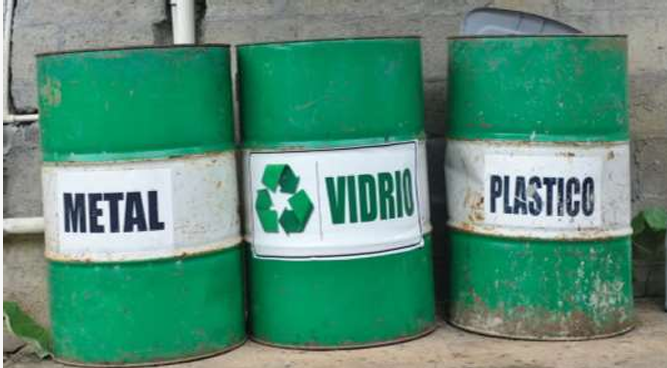
X. Protection of habitats and endangered species
We assume a firm commitment to the protection of habitats and endangered species. For this, we carry out exhaustive monitoring of the flora and fauna, through inventories every five years, as well as a strategic installation of trap cameras in the areas, where the animals can be at risk of hunting.
Also, we have implemented sensibilization campaigns directed to our collaborators and neighbors, with the objective of conscientize the importance of preserving these species and their habitats, where endangered species are highlighted, and the prohibition of their hunting is emphasized to guarantee their long-term survival.
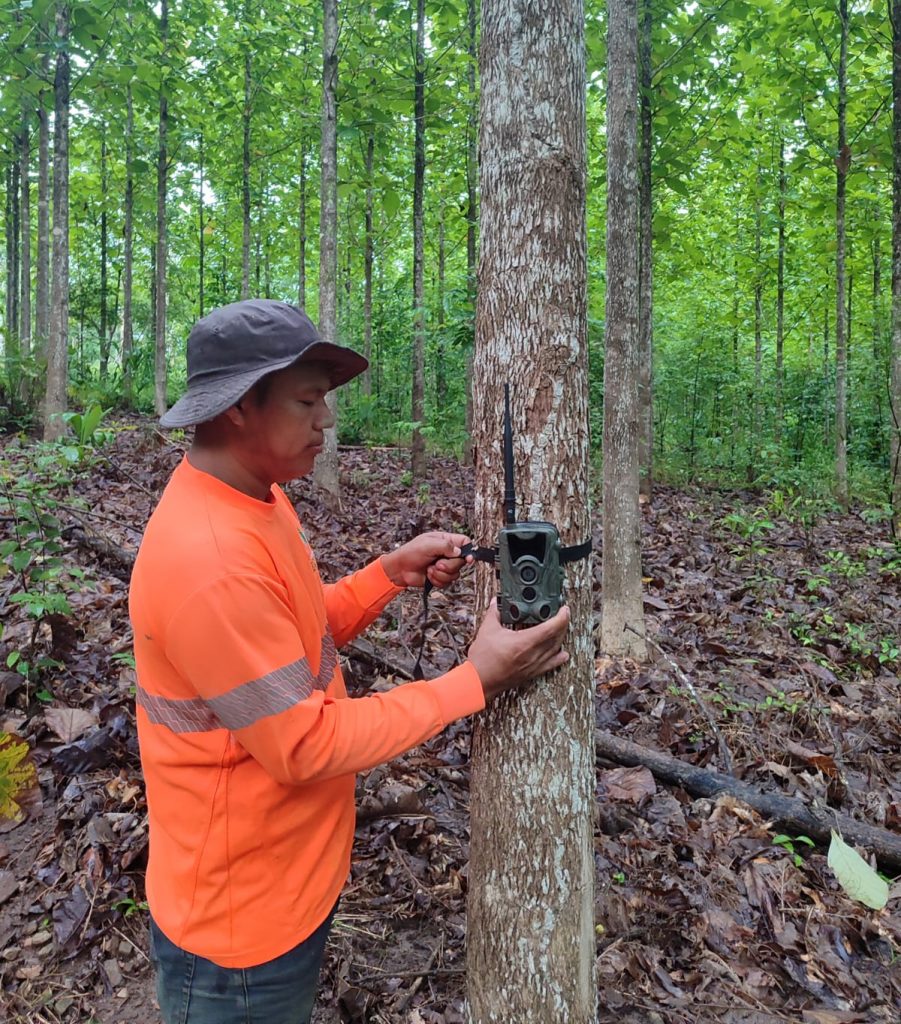
One of the strategies of sensibilization that we implement to incentivize our collaborators to participate in the biannual contest of photography of fauna and flora present in our projects where the best picture receives an award.
Our company actively commits to work in the conservation of local biodiversity and to promote responsible practices that contribute to the protection of the ecosystems in which we operate.
Given that the province of Darién houses the largest extension of forest area in the Panamanian isthmus, it is also recognized as one of the most significant links with the Colombian Chocó, a region that is distinguished for being one of the areas with the greatest endemic biodiversity in the world.
Monitoring of the areas affected by erosion and runoff
To address this challenge, we implemented a continuous monitoring program that allows us to identify the most vulnerable zones.
As part of our strategies for restoration, we opt for the plantation of native monocotyledonous plant species and grass. These plants are specially selected because of their capacity to stabilize soil, prevent erosion, and promote the regeneration of natural local ecosystems.
Our commitment to soil conservation and restoration of degraded landscapes is reflected in our concrete actions to protect and revitalize the natural environment in which we operate.
Landscape values
Our commitment to the conservation and promotion of landscape values is reflected in our operative practices.
We strive to harmoniously integrate our teak plantations into the surrounding landscape, respecting and enhancing the natural beauty of the region. Also, we meticulously take care of the local biodiversity, including the preservation of native species and the creation of ecological corridors that contribute to the connectivity of the landscape.
Through our work, we look not only to improve the productivity and sustainability of the land but also to contribute to the valuation and appreciation of the unique landscape values of Darien. We are committed to the care and protection of these landscapes for the present and future generations.
A study conducted by Pedro Méndez for FCPP in 2011, highlighted one of the main environmental challenges faced by the province of Darién was the rampant deforestation of natural forests. Later, these lands were sold to create pastures for livestock or to establish private farms. This problem was aggravated by indiscriminate hunting activities perpetrated by poachers in areas where the situation is critical regarding illegal trafficking of game meat, especially in areas near the border and the coasts of Colombia.
Photographic satellite evidence of the change in the use of land in the projects
In the selection of the lands for the Tectona Production, Inc., projects we have made an effort to acquire areas previously dedicated to cattle, avoiding the cut down of natural forests or altering ecosystems less intervened for the establishment of our plantations. As shown in the next images:
“El Guayacán” Project

Satellite image from USGS Date: January of 1970
Satellite image from PLANET Date: November of 2023
“Filo del Tallo” Project

Satellite image of USGS Date: January of 1970
Satellite image of PLANET Date: July of 2023
By choosing lands previously degraded due to cattle activity, we are contributing to the restoration and recuperation of natural ecosystems. The reforestation of these lands helps reestablish biodiversity, improving the soil’s quality and mitigating erosion, which at the time benefits local fauna and contributes to the conservation of natural resources in the region.
“La Esperanza” Project
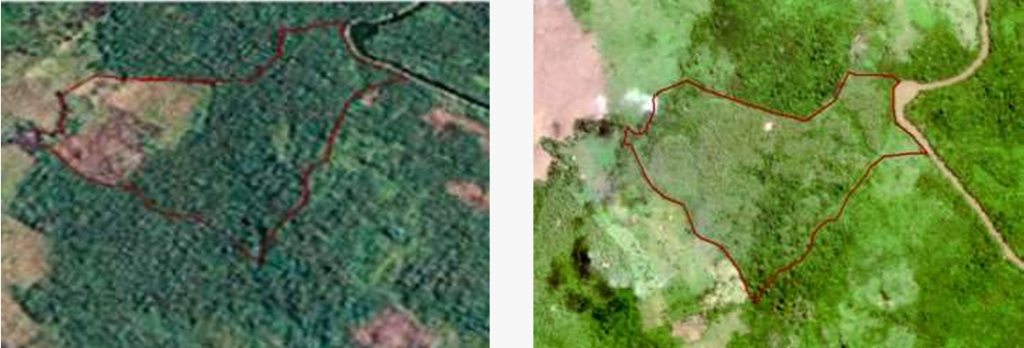
Satellite image from USGS Date: January of 1970
Satellite image from PLANET Date: July of 2023
“La Relojera” Project

Satellite image from ESRI Date: December of 2009
Satellite image from PLANET Date: July of 2023
Commercial reforestation of the lands previously used for cattle represents a form of sustainable use of soil. Instead of resorting to deforestation of virgin or intact areas, we are giving a second chance to the lands that have already been altered by human activity, which reduces the pressure on natural ecosystems and helps maintain the integrity of protected areas and native forests.
According to the 2020 INEC livestock census, Darién has around 14.3% of the country’s cattle. Until 2010, there were approximately 102,572.58 hectares suitable for raising livestock in the province.
